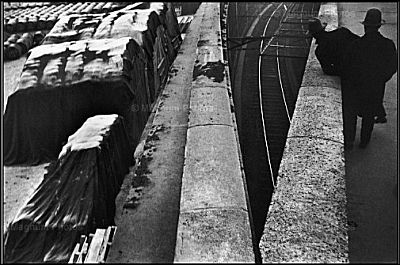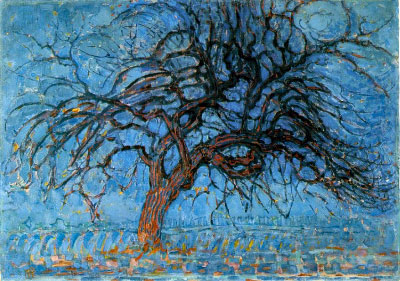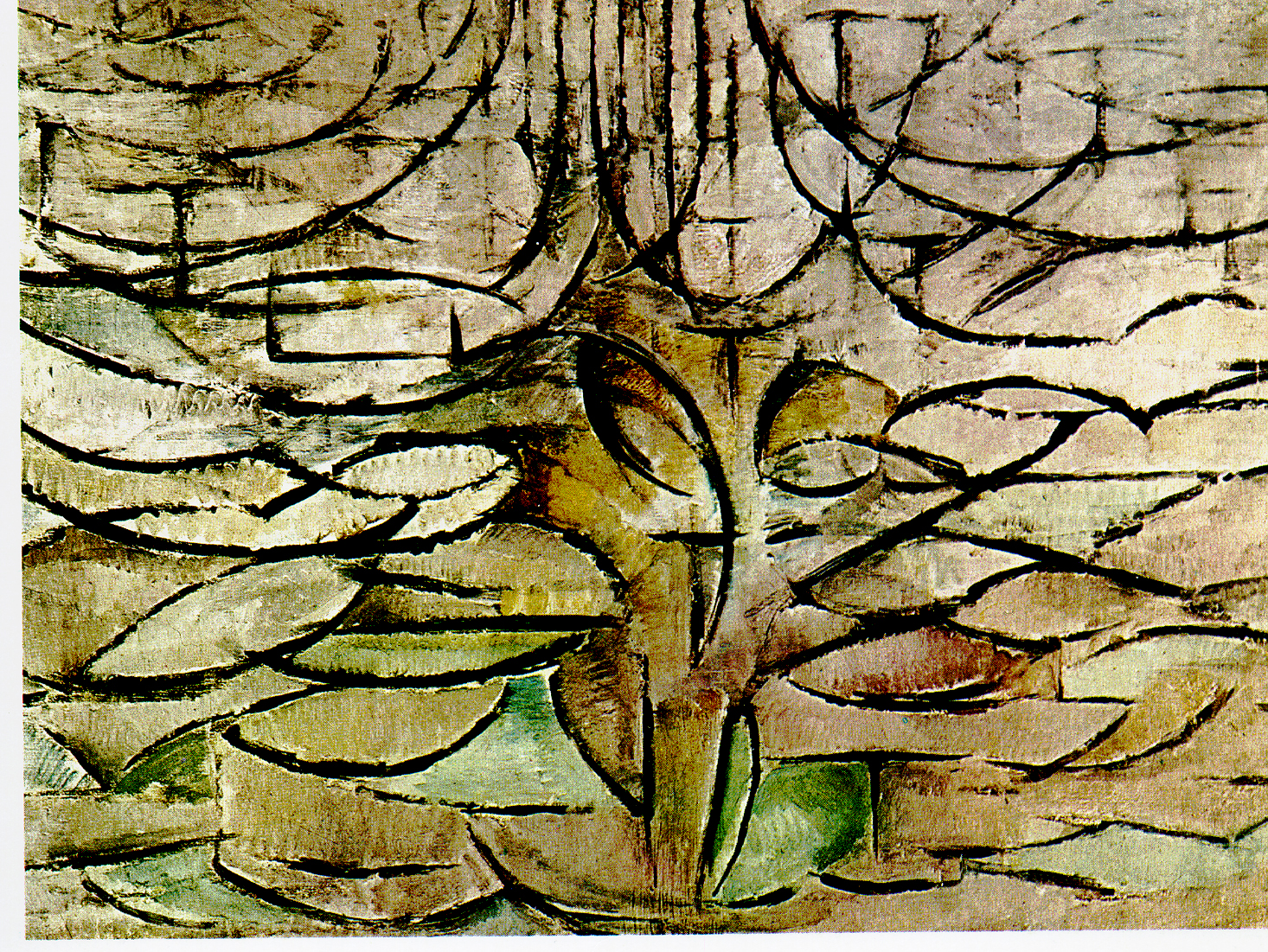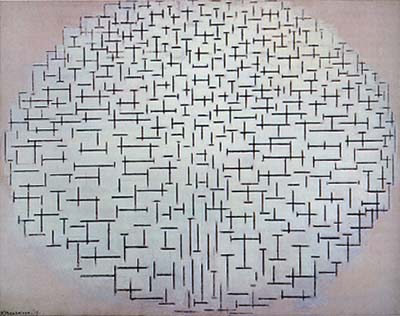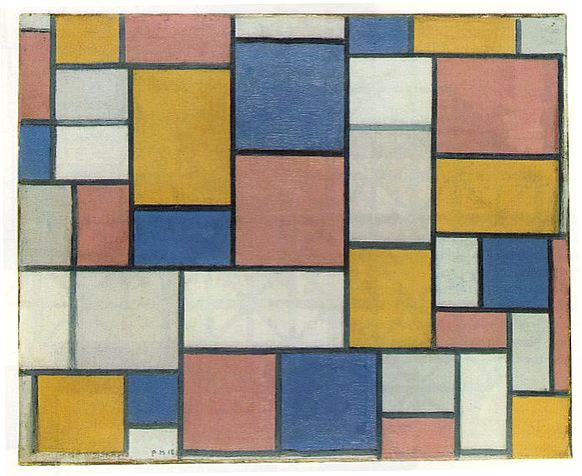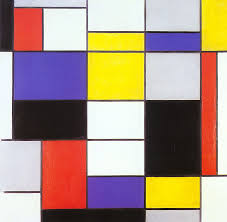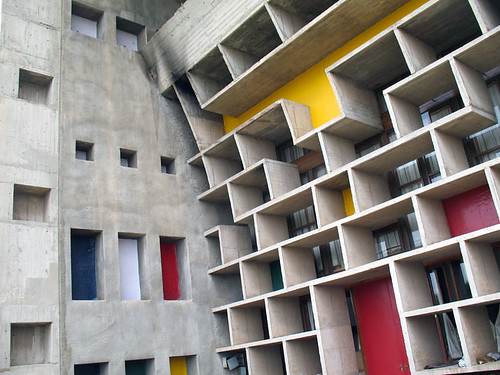Henri Cartier-Bresson was one of the first photographers to use a 35mm camera. This meant he could go onto the streets and take more impromptu images and capture the ‘Decisive moment’.

“Brie” by Henri Cartier-Bresson, June 1968, Brie, France
The Golden Rectangle is a mathematical equation found in nature. It is found in the spiral of a shell, the petals of a flower, the seeds of a sunflower and within the human body.
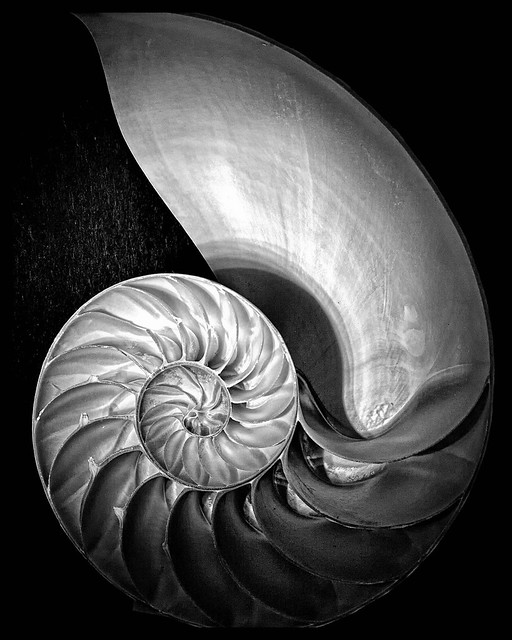
Artists have often looked at nature to find new ways of seeing. Leonardo Da Vinci often made drawings from nature and created new inventions based on this work. In his Vitruvian Man he finds the Golden Rectangle inside the form of the human body.
Leonardo also used the golden rectangle in his paintings for example in the Mona Lisa (c1503-06). The origins of the golden rectangle are in Maths and when artists use it it is often as a guide - Cartier-Bresson used it as a guide to composition.
However, Mondrian's development to this high modernist style did start paintings of actual things from the real world. When Mondrain saw the work of the cubists in Paris 1911 he style began to change.
1908
1913
1918
1923
These icons of modernism are mirrored by the Architecture of Le Corbusier who used the Golden Rectangle in his building or his 'Machines for Living'.
Le Corbusier's beautiful Chapel (bottom image) seems more organic than his usual hard edged style. Le Corbusier was one of the most influential Modernist thinkers of the 20th Century- he wanted to reinvent modern living and the buildings we lived our lives in.

 |
Architecture is the most visible art form and lasts the longest. It tells us and future generations who and what we are. The Le Corbusier influenced Brutalist style was used for Britain's new social housing projects. For economic and practical reasons this style was eventually watered down and found its way into social housing, tower blocks, shopping centers and car parks.
The modernist look works beautifully in the sunshine of the continent but second rate modernist social housing seen next to a granite grey sky can be difficult to find beautiful. However, the Painter George Shaw finds beauty in these areas and the strange concrete play areas seem like relics from another world. I was raised on a 1960's modernists council estate in the North West of England. Concrete and Golden Rectangle influenced windows helped form my own personal aesthetic.
This is an example were high art ideas filter down into the mundanity of peoples everyday existence.
The Rule of Thirds is a slightly more streamline version of the Golden Rectangle. In this still from Orson Welles' 'Citizen Kane' you can clearly see how Welles has used the natural divides created by the curtains to create the Rule of Thirds. I have chosen a still from a film as the technique is used extensively in cinematography.
In this scene the figure on the left dominates the left-hand third, the middle third is empty (bar a distant doorway with a shadowy figure) and the right-hand third has another character.

This is a diagram of the next stage of the rule of thirds. Where the lines cross it creates 'hotspots' and if parts of the composition are aligned with these 'hotspots' you can end up with a more dramatic image (it is explained well here).
If we look again at the scene above you can notice the character on the right is leaning on some railings. These railings run along the bottom third of the image adding drama to the composition. Both the characters heads are fairly close to the two top 'hotspots'.
Once you start looking at different scenes from 'Citizen Kane' you can see how Welles has used the technique in his groundbreaking movie. The stark black and white emphasise the structure behind each scene.
The Golden Rectangle and The Rule of Thirds are rules of composition and like all rules they can be broken. The best artists use them as guides and don't slavishly follow them - they play with them.
All discussions about The Golden Rectangle and Composition ultimately make us ask the question 'What is Beauty?'. Is Beauty a universal rule (as the golden Ratio suggests) or does it change with different cultures and individuals? Can something Ugly be Beautiful? What is it that makes one image more appealing than another? Is Beauty in nature different than beauty in culture? Where has Beauty gone in Modern art?
Maybe the point isn't to answer these questions but simply to consider them.
'Consulting the rules of composition before taking a photograph is like consulting the laws of gravity before going for a walk.'
Edward Weston

